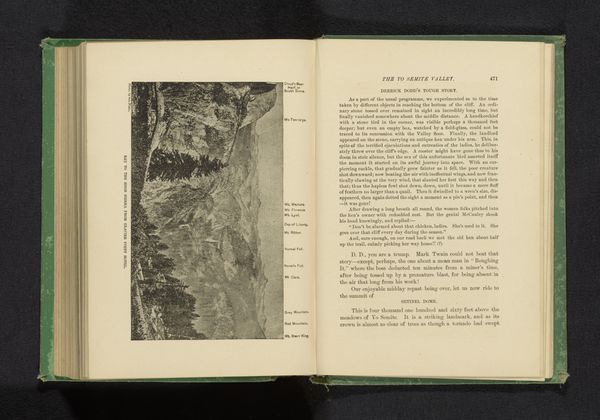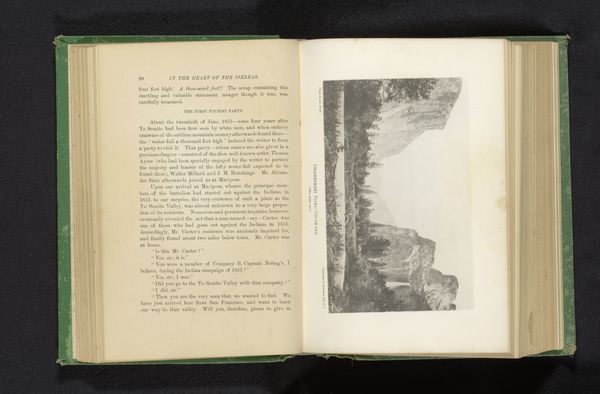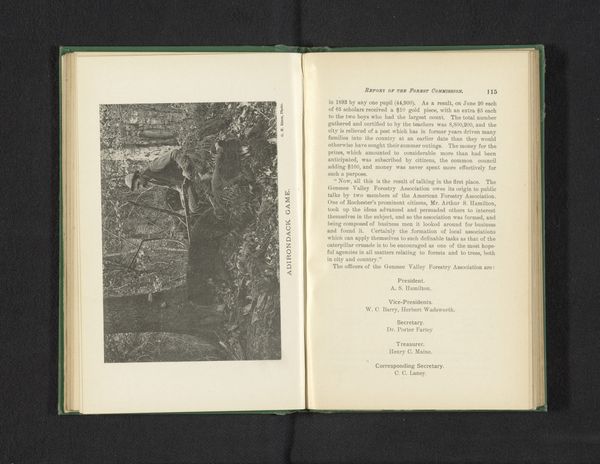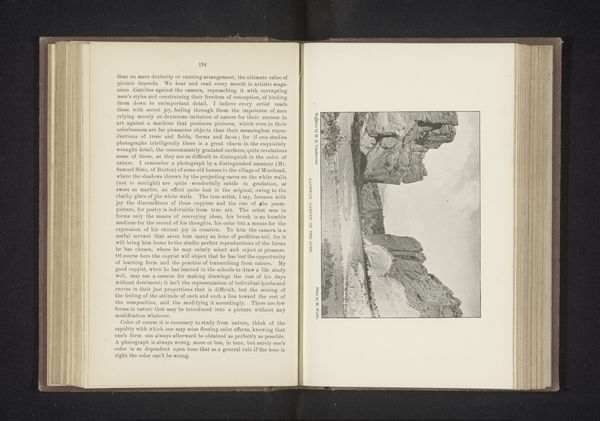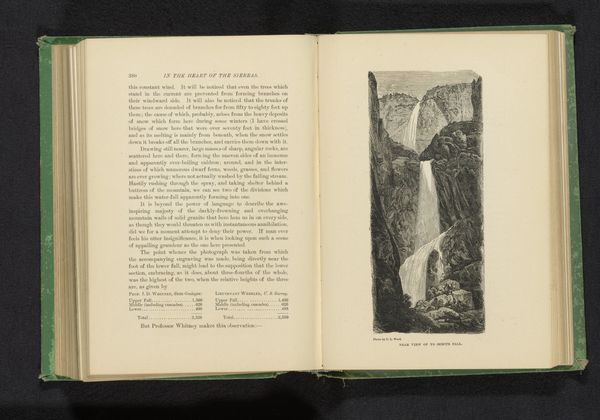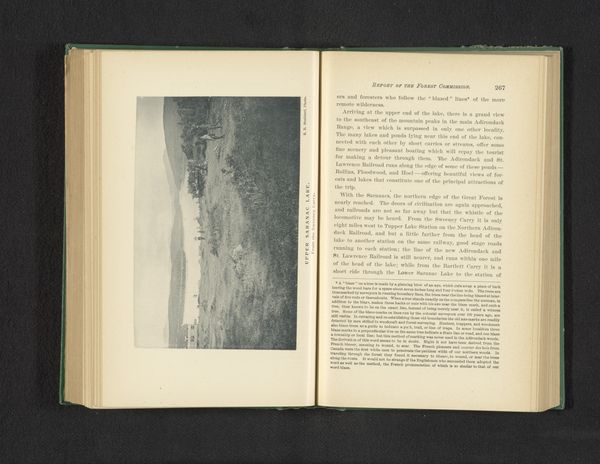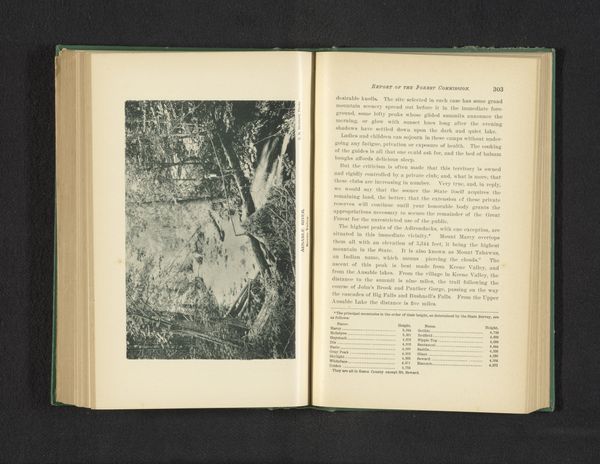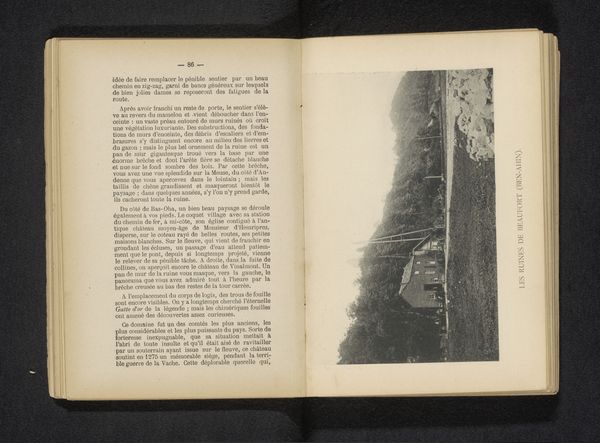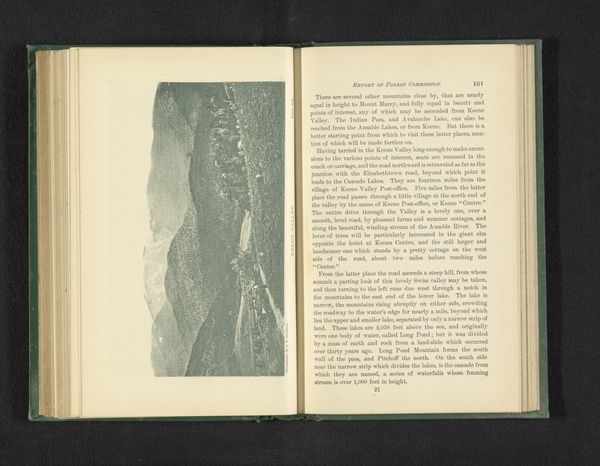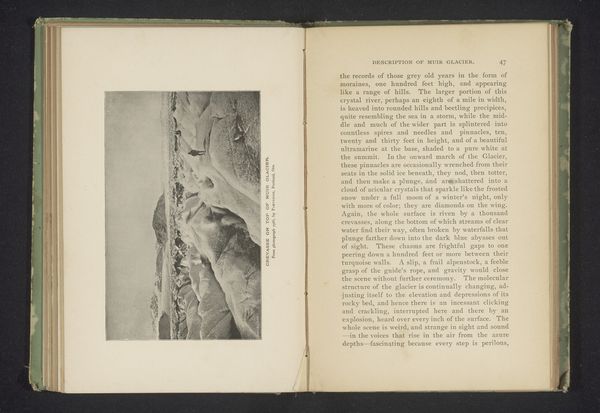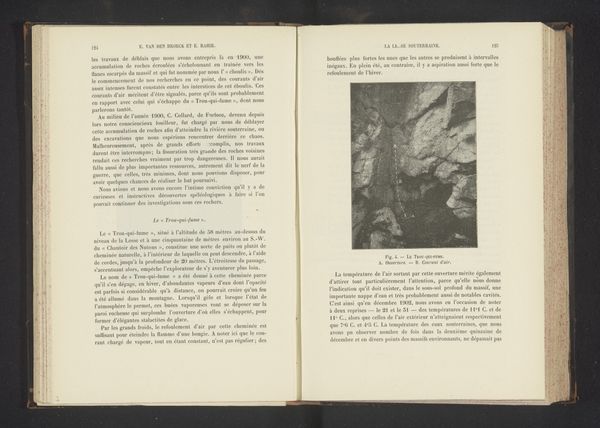
#
tree
#
aged paper
#
homemade paper
#
paper non-digital material
#
paperlike
#
sketch book
#
personal journal design
#
personal sketchbook
#
forest
#
journal
#
paper medium
#
historical font
Dimensions: height 99 mm, width 161 mm
Copyright: Rijks Museum: Open Domain
Curator: Here we have an intriguing image, taken before 1886 by George Fiske, titled "Gezicht op de Dead Giant in Tuolumne Grove, Californië" – or, "View of the Dead Giant in Tuolumne Grove, California." Editor: My immediate reaction is melancholy, almost sepulchral, despite being set in a grove. There's something profoundly still and somber about it. The image is in a book, perhaps adding to that sense of removed history. Curator: It's fascinating, isn’t it? The picture documents what remains of this "Dead Giant" – a massive sequoia tree, tragically hollowed out. I see a dark rectangle—that's the hollow. Look closely. Editor: It almost seems a crime to cut such a huge rectangle! You have a line of people sitting calmly inside... I do wonder how did they create this bizarre stage? Why such a destructive path? The hollow now resembles some distorted symbol—a frame without a painting, a window onto emptiness. Curator: Some argue it provided shelter and acted as a tourist attraction, which explains the figures inside. Symbols and meanings shift, but the scale of it remains. These giants remind us of nature's potential for immense growth and endurance, dwarfing all other forms of the forest. Editor: Yes, it's as though someone was seeking an artificial form or domestic space directly in opposition to nature's original majesty. But look closer, what remains in a space is more a tale than a crime: like palimpsests. Time gives new significance to the marks of destruction. Curator: Absolutely. Though my artistic spirit finds it hard to appreciate humanity’s arrogance in defacing this glorious tree for their entertainment. Today, it feels deeply respectful. It's a heavy reminder that some monuments cannot last—either made by men or the wild. Editor: Ultimately, isn’t the human story always interwoven with the natural? Destruction, creation, memorial. As if a dead icon becomes a canvas for new tales and myths. This artwork holds both reverence and regret.
Comments
No comments
Be the first to comment and join the conversation on the ultimate creative platform.
